We set sail from Cartagena on December 2 – the first time we had hoisted our sails since pulling into Cartagena on August 27. There is no cure for the boatyard blues like a glorious blue water sail. The weather router forecasted we’d be motoring the full two days to Panama; a few hours into the trip, just after land had slipped away behind us, the wind held steady and we were able to sail for over twelve hours solid. Sail ho!
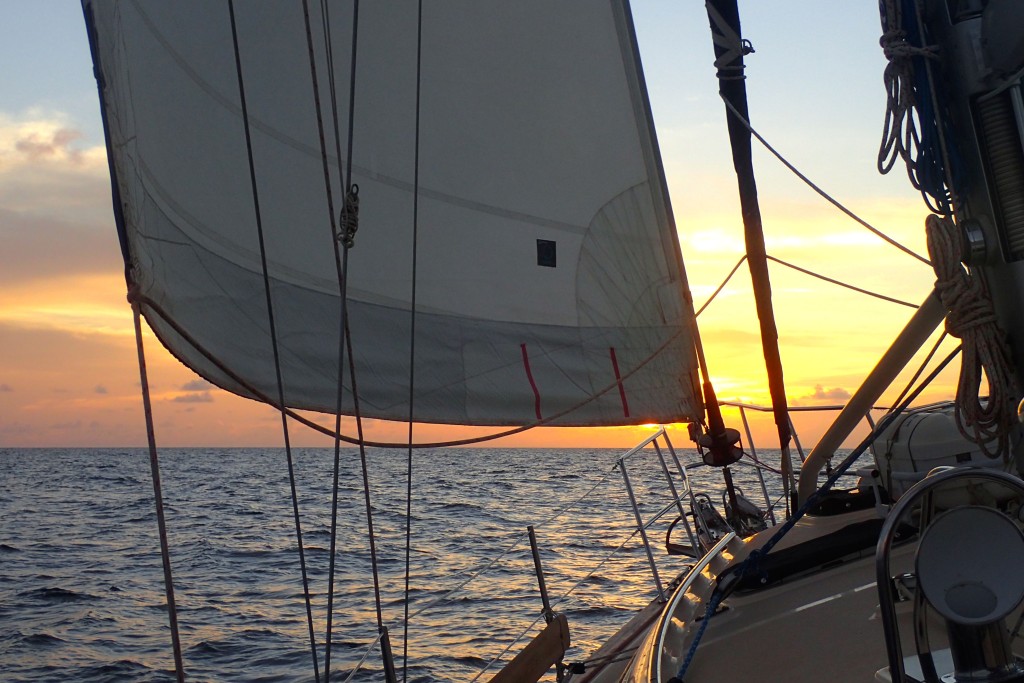
Before this whole adventure, I was a lake and harbor day sailor. I had never sailed out of the sight of land until we arrived in the Bahamas for the winter of 2013-2014. As we pulled out of each harbor in those early days, the land behind us loomed large for me. We’d gotten to know and maybe even love that land; we were usually sorry to leave it behind. In the Bahamas, there was usually a boat back in the anchorage anxiously watching our departure, hoping they could overcome their fears and follow our breadcrumb trail out of the harbor the next day. In the Eastern Caribbean, we sometimes had buddy boat dinghies accompanying us out if we were leaving the pack for good. When we pulled away from land in Cartagena, there were a couple of yard employees waving goodbye and a pack of boatyard dogs howling after us. Leaving land and its people behind can be difficult.

As we sail away, the land fades from precise rocky beaches and tree-filled hills you walked, to a blurry semblance of the contours you hiked, to just a silhouette of mountain tops you summitted. If the island is flat, it slips out of sight around three miles offshore. A mountainous shoreline might stay with us a few more miles out. Twenty miles away, the only evidence of the land we left behind is a splotch on the chart plotter and cumulus clouds forming over the land on the horizon. At an average of four knots, it takes several hours before land slips away.
And suddenly, the next time you get up to scan the horizon, there’s no land in sight. The land you’re heading for is far ahead. The land you left behind is far behind. It’s just you, your boat, the sea and the air – and maybe a few flying fish and brown boobies that accompany you along the way. If trouble befalls your boat out of the sight of land – if a crew members gets sick, a boat part fails or a storm kicks up – you have to decide whether to turn back to the last land or keeping going to the next. It will be a long sail before land is in sight again, in either direction. Out of the sight of land, it always seems easier to keeping going than to turn back, even if it means a longer sail.
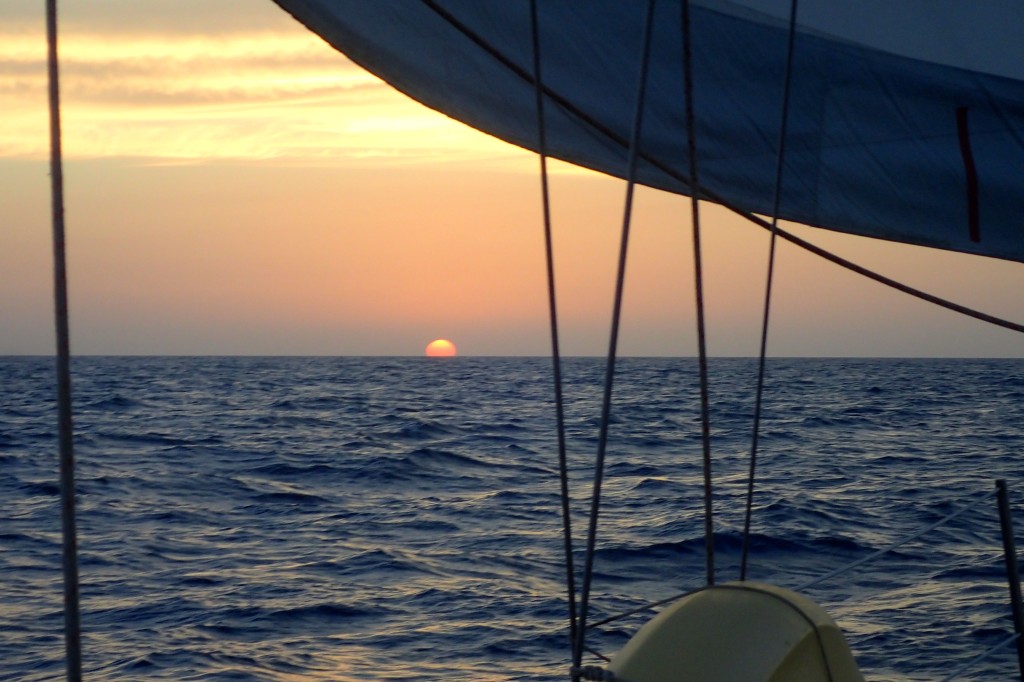
On a two-week, 1600 nautical mile offshore delivery from St Thomas, USVI to New York Harbor, Jason and his crew lost their foresail. As dusk was approaching one night, the fairlead popped off the mast, the halyard chafed through, and the sail refused to furl as they tried to prepare for the overnight by shortening sail. They doused the sail to see what was wrong and, with night approaching, big winds building and no land for over 300 nautical miles, Jason decided to sail on with just the staysail. The first mate demanded they head in and get the fairlead and halyard repaired. Jason said, “Turn in where?! We’re going to New York!”
You make those kinds of decisions when there’s no land in sight. We lost our extra jerry cans full of diesel over the side when a rogue wave waked our boat on delivery back to New York, and Jason conserved fuel and sailed on to New York Harbor. The entire leech of our mainsail blew out from sun damage and building gusts in the Grenadines, and we sailed on to the next island with a reputable sail loft. You don’t turn back when there’s no land in sight; there’s nowhere to turn back to.

On offshore passages, we time our landfalls for early morning, to ensure plenty of time to navigate the new harbor and anchor while the sun is high. I take the last overnight watch of the passage, from midnight until sunup. Usually, just as the horizon begins to fill with pink clouds, I sight an object that doesn’t appear to be moving. I keep an eye on it and the chart plotter until I’m sure it’s not a large boat or a figment of my imagination. Land Ho! When land does come into sight again captain and crew are on high alert. You monitor the offing looking for the harbor entrance and channel buoys. You monitor the chart plotter looking for shoals or wrecks in your path. You monitor the water for fishing pots (often marked by a clear soda bottle or water jug) and fishing boats (often low-lying craft without lights or an engine) lost in the waves. As you cross into shallower waters in the harbor, you send a crew up on the foredeck to look for coral heads and other obstructions in the water. The crew looks for changes in water color – tan sand for good anchoring, and black spots for coral heads – and changes in water speed – breaking waves for sudden shallows, ripples against the waves for strong tidal currents. Always you stay far enough away from land to allow your boat to swing a full 360 degrees around your anchor without running aground. When you’re used to sailing out of the sight of land, the obstacles of land are worthy of attention.
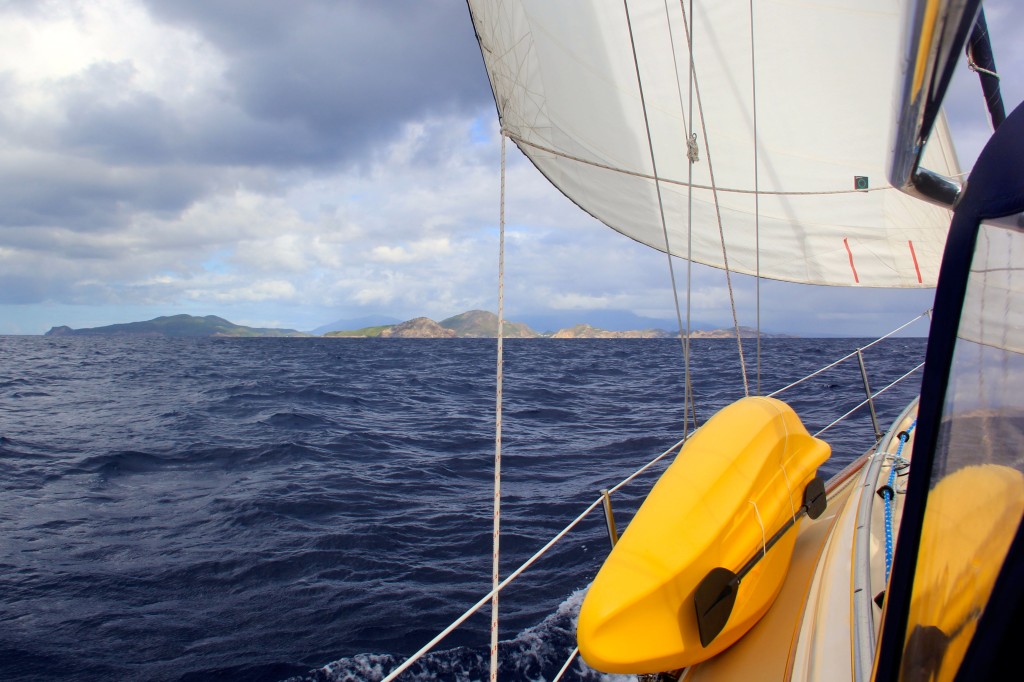
Land is dangerous that way. It is the cruelest irony of making landfall. Land is the terra firma people seek, the place people go to get safe from the wind and waves and water of the sea. As we become sailors, the sea becomes our refuge, the place we go to find solace from the dizzying distractions of the world, the harrowing hazards of land. Land looms to a sailor as a reef to run into, a muddy ground to drag an anchor through, a harbor full of neighboring sailboats to collide with, a certain bought of landsickness. No land in sight becomes home. The blue of the sky and the ocean is endless, a thin, often cloudy line dividing the two. Blue to starboard, blue to port, blue off the bow, and off the stern. Blue up the mast and blue under the keel. With no land in sight, you are surrounded and engulfed by the sea. There’s no easy out back to land if something goes wrong; there’s no danger of land looming large. You are free to sail the sea. The sea is our home, and land a dreaded necessity.
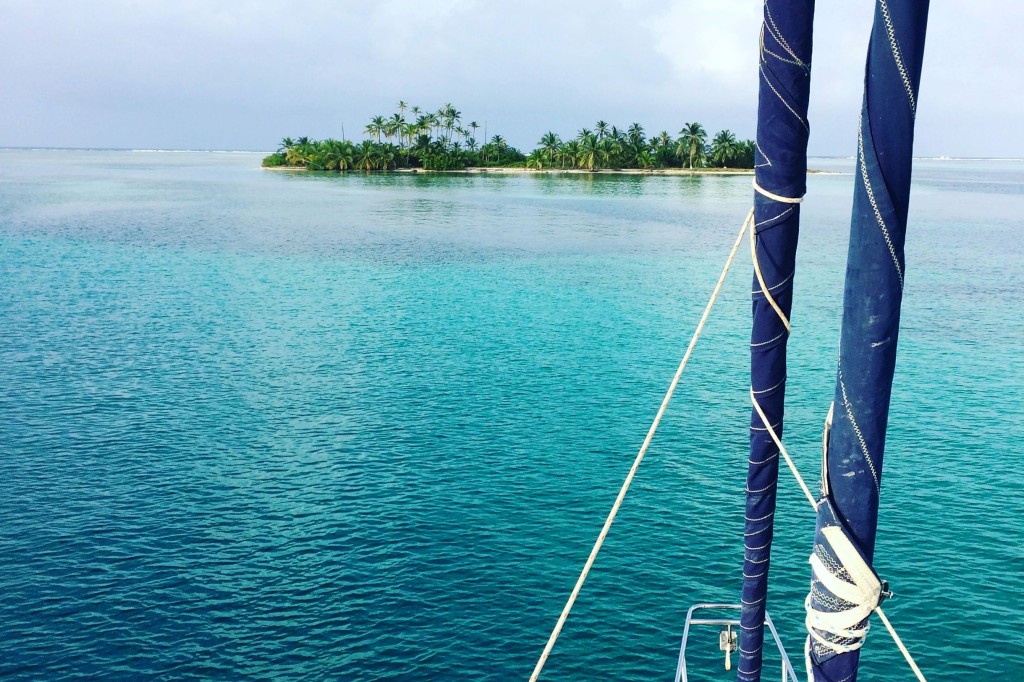
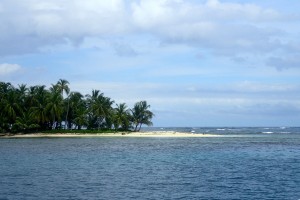
We’ve made landfall here in the Guna Yala (San Blas Islands) off the shore of Panama. The archipelago is riddled with reefs, shoals and shipwrecks, and the charts don’t even pretend to be accurate. Large swaths of the archipelago are simply marked as “Unsurveyed.” We creep our way along in daylight, follow published waypoints and a friend’s breadcrumb trail. So far so good, but I can’t wait to get back out to sea. Sail Ho!
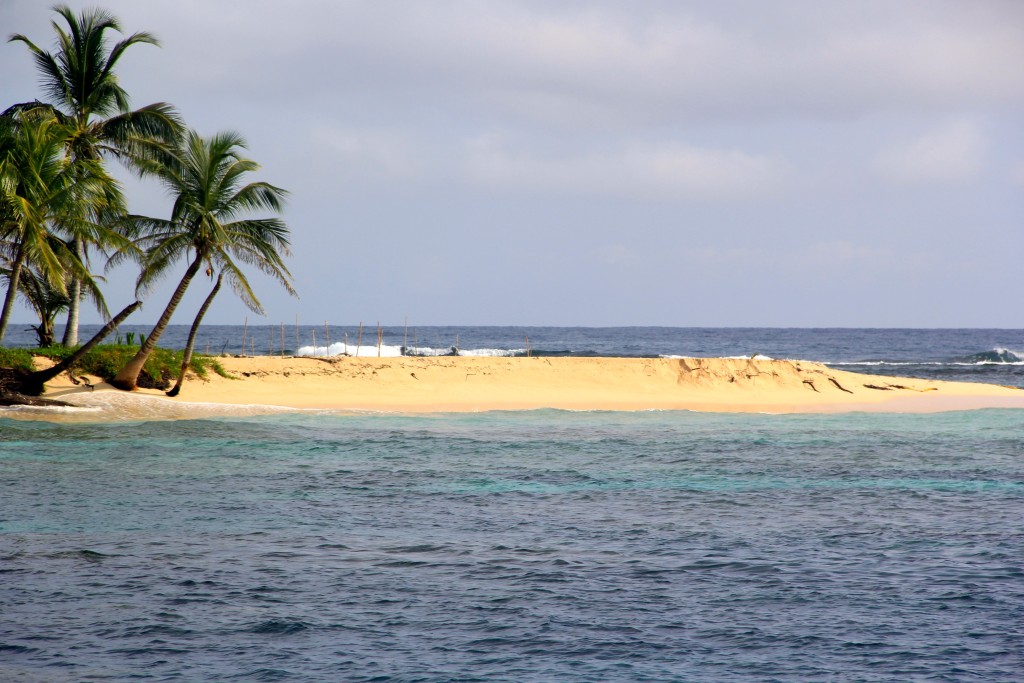

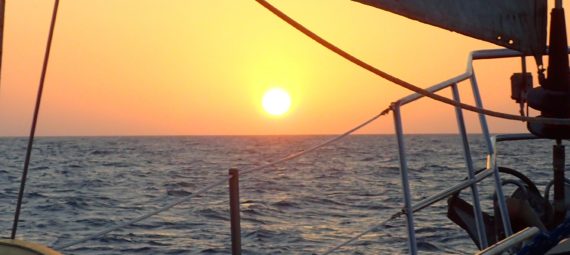
Land ho! Miss you Brita & Jason :-) glad to hear all is well!! I enjoyed this one quite a bit.
Are you guys going to join a UK sailing club this summer? Hope so! Miss you guys.
Lovely writing Britannia.
Thanks Wendy. Going to print out a first draft of my book right now. Sail ho!